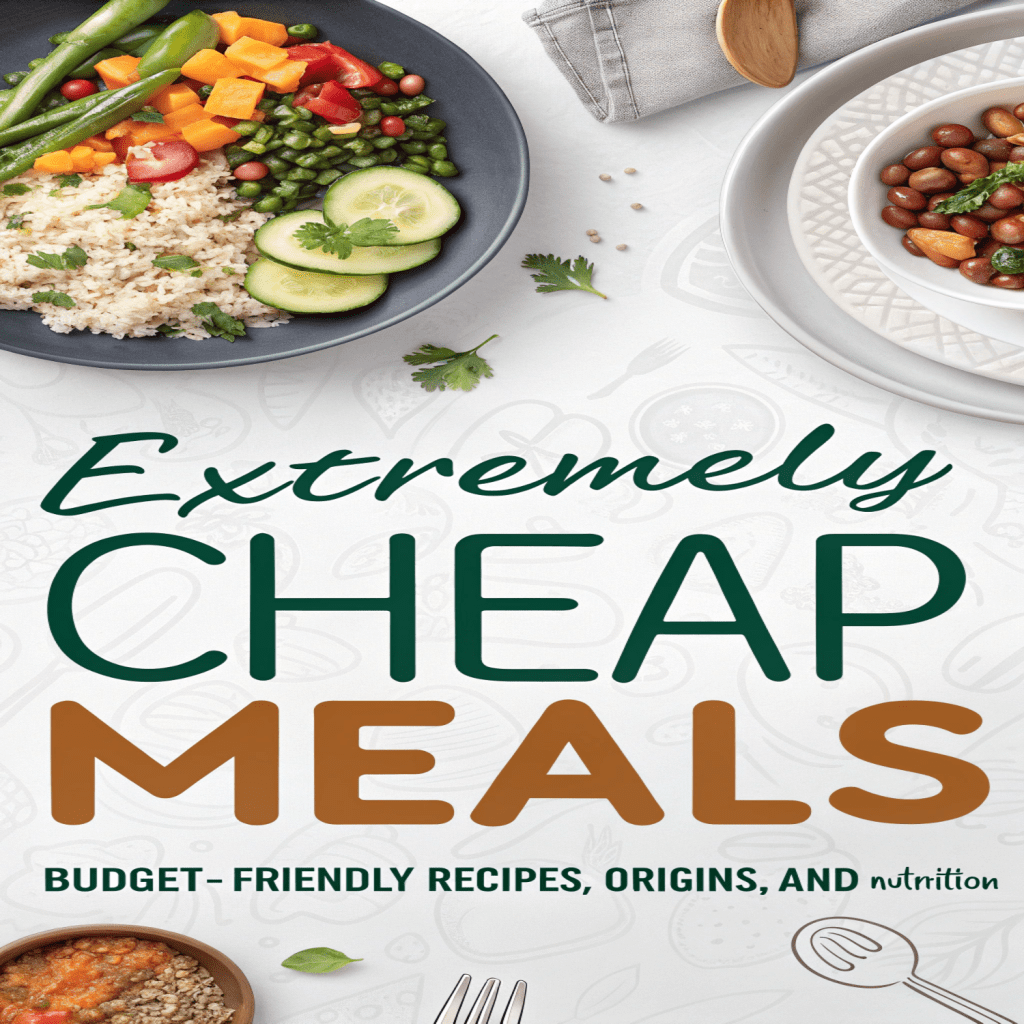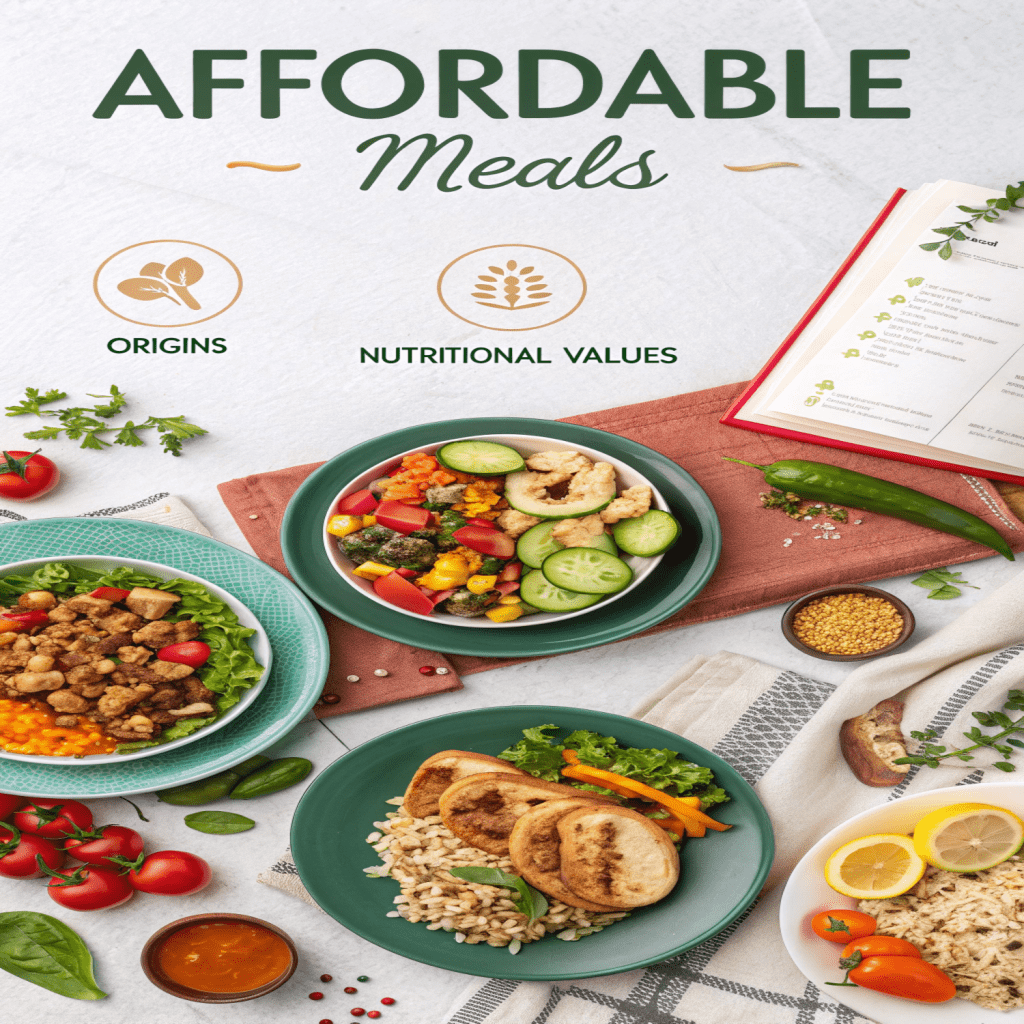
Extremely cheap meals offer a lifeline for those looking to eat well without breaking the bank. In today’s fast-paced world, saving money on food while maintaining nutrition is a priority for many. This article dives into how to make extremely cheap meals, their historical origins, nutritional benefits, and practical tips for incorporating them into your daily life. Whether you’re a student, a budget-conscious family, or simply aiming to cut grocery costs, these meals deliver flavor, sustenance, and savings.
What Are Extremely Cheap Meals?
Extremely cheap meals are dishes that cost minimal money to prepare, often using affordable, accessible ingredients like grains, legumes, vegetables, and small amounts of protein. These meals prioritize low-cost staples that are versatile, filling, and widely available. Think rice and beans, vegetable soups, or pasta dishes—foods that stretch far and feed many. The goal is to create satisfying meals for under a few dollars per serving, making them ideal for tight budgets.
The Origins of Extremely Cheap Meals
Historical Context
Extremely cheap meals have roots in cultures worldwide, born out of necessity during times of scarcity. Peasant cuisines, like Italian minestrone or Indian dal, emerged from rural communities that relied on local, inexpensive ingredients. During the Great Depression in the 1930s, families in the United States turned to dishes like potato soup or cornbread to survive economic hardship. Similarly, wartime rationing in the UK popularized recipes like vegetable stews, using whatever was available.
Cultural Significance
Across the globe, frugal cooking reflects resourcefulness. In Mexico, tortillas and beans form the backbone of many meals, while in Asia, rice-based dishes with minimal protein are dietary staples. These cuisines showcase how communities transform humble ingredients into flavorful, nourishing dishes. Extremely cheap meals often carry cultural weight, passed down through generations as symbols of resilience and ingenuity.
Why Choose Extremely Cheap Meals?
- Affordability: Ingredients like rice, lentils, and seasonal vegetables cost pennies per serving.
- Accessibility: Most ingredients are pantry staples or available at any grocery store.
- Nutrition: When balanced, these meals provide essential nutrients like fiber, protein, and vitamins.
- Versatility: Simple ingredients adapt to countless recipes, suiting various tastes.
- Sustainability: Using minimal, plant-based ingredients reduces environmental impact.
How to Make Extremely Cheap Meals
Creating extremely cheap meals requires smart planning and a focus on high-value ingredients. Below are five budget-friendly recipes, complete with instructions, approximate costs, and tips for maximizing savings. Each recipe serves four and costs under $5 total (based on average U.S. grocery prices in 2025).
1. Rice and Beans
Cost: ~$2.50
Ingredients:
- 1 cup dry rice ($0.50)
- 1 can black beans ($0.80)
- 1 onion ($0.50)
- 2 cloves garlic ($0.10)
- 1 tsp cumin ($0.10)
- Salt, pepper, oil ($0.50)
Instructions:
- Cook rice according to package instructions.
- Sauté diced onion and minced garlic in oil until soft.
- Add drained beans, cumin, salt, and pepper. Cook for 5 minutes.
- Mix beans with rice and serve hot.
Tips: Buy rice and beans in bulk to save more. Add chili powder or hot sauce for extra flavor.
2. Vegetable Lentil Soup
Cost: ~$3.00
Ingredients:
- 1 cup dry lentils ($0.80)
- 2 carrots ($0.50)
- 2 celery stalks ($0.50)
- 1 onion ($0.50)
- 1 can diced tomatoes ($0.70)
- 4 cups water or broth ($0.50)
- Salt, pepper, thyme ($0.50)
Instructions:
- Rinse lentils and set aside.
- Sauté diced onion, carrots, and celery in oil until tender.
- Add lentils, tomatoes, water, and seasonings. Simmer for 30 minutes.
- Adjust seasoning and serve with bread, if available.
Tips: Use vegetable scraps for homemade broth to cut costs further.
3. Pasta with Garlic and Oil
Cost: ~$2.00
Ingredients:
- 1 lb pasta ($1.00)
- 4 cloves garlic ($0.20)
- ¼ cup olive oil ($0.50)
- Red pepper flakes, salt ($0.30)
Instructions:
- Cook pasta in salted water until al dente.
- Sauté thinly sliced garlic in olive oil until golden.
- Add red pepper flakes and toss with drained pasta.
- Season with salt and serve immediately.
Tips: Buy store-brand pasta and use dried herbs for extra flavor.
4. Potato and Cabbage Stir-Fry
Cost: ~$2.80
Ingredients:
- 4 potatoes ($1.00)
- ½ head cabbage ($0.80)
- 1 onion ($0.50)
- 1 tsp soy sauce ($0.20)
- Oil, salt, pepper ($0.30)
Instructions:
- Dice potatoes and boil until just tender.
- Sauté sliced onion and cabbage in oil until soft.
- Add potatoes, soy sauce, salt, and pepper. Stir-fry for 5 minutes.
- Serve as a main dish or side.
Tips: Swap cabbage for other cheap vegetables like zucchini or carrots.
5. Oatmeal Breakfast Bowl
Cost: ~$1.50
Ingredients:
- 2 cups oats ($0.80)
- 1 banana ($0.30)
- 2 tbsp peanut butter ($0.30)
- Cinnamon, sugar ($0.10)
Instructions:
- Cook oats in water or milk according to package.
- Slice banana and mix with peanut butter.
- Top oats with banana mixture and a sprinkle of cinnamon and sugar.
Tips: Buy oats in bulk and use overripe bananas for sweetness.

Nutritional Value of Extremely Cheap Meals
Extremely cheap meals can be highly nutritious when planned thoughtfully. Here’s a breakdown of the nutritional benefits of common ingredients used in these dishes:
- Rice: Provides carbohydrates for energy. Brown rice adds fiber and micronutrients like magnesium.
- Beans and Lentils: High in protein, fiber, and iron. They support muscle health and digestion.
- Vegetables: Carrots, cabbage, and onions offer vitamins A, C, and K, plus antioxidants.
- Potatoes: Rich in potassium and vitamin C, they’re filling and energizing.
- Oats: Packed with fiber, particularly beta-glucan, which supports heart health.
Sample Nutritional Breakdown (Rice and Beans, per serving):
- Calories: ~300 kcal
- Protein: 10g
- Fiber: 8g
- Carbohydrates: 50g
- Fat: 3g
- Key Nutrients: Iron, folate, magnesium
To maximize nutrition, combine ingredients strategically. For example, pairing rice with beans creates a complete protein, supplying all essential amino acids. Adding vegetables boosts vitamin content, while small amounts of healthy fats (like olive oil) aid nutrient absorption.
Tips for Making Extremely Cheap Meals Even Cheaper
- Shop Smart: Buy in bulk, choose store brands, and shop at discount stores or farmers’ markets.
- Use Leftovers: Repurpose ingredients, like turning leftover rice into fried rice or soup.
- Grow Your Own: Plant herbs, green onions, or tomatoes for fresh, free ingredients.
- Plan Meals: Create a weekly menu to avoid impulse buys and reduce waste.
- Cook in Batches: Prepare large portions to save time and energy costs.
Cultural Variations of Extremely Cheap Meals
Extremely cheap meals vary by region, reflecting local ingredients and traditions. Here are a few examples:
- India: Dal and rice, a protein-rich staple made with lentils and spices.
- Italy: Pasta e fagioli, a hearty bean and pasta soup.
- Mexico: Frijoles de la olla, slow-cooked beans served with tortillas.
- Ethiopia: Injera with lentil wat, a spiced lentil stew on fermented flatbread.
These dishes show how global cuisines turn simple ingredients into flavorful, satisfying meals.
Challenges and Solutions
Challenge: Limited Flavor
Solution: Use affordable spices like cumin, paprika, or chili powder to enhance taste. Fresh herbs, if available, add brightness.
Challenge: Time Constraints
Solution: Opt for one-pot meals like soups or stir-fries to save prep and cleanup time.
Challenge: Nutritional Balance
Solution: Include a variety of food groups—grains, legumes, vegetables—to ensure balanced nutrition.
Incorporating Extremely Cheap Meals into Your Lifestyle
Start by replacing one or two meals a week with these recipes. Gradually increase as you get comfortable with the ingredients and cooking methods. Involve family or roommates to share prep tasks and make it a fun, communal activity. Experiment with spices and seasonal vegetables to keep things exciting.
Environmental and Social Benefits
Extremely cheap meals often rely on plant-based ingredients, which have a lower environmental footprint than meat-heavy dishes. By choosing these meals, you reduce water and land use while cutting grocery costs. Additionally, sharing these recipes with others fosters community and promotes sustainable eating habits.
Extremely cheap meals prove that eating well doesn’t require a big budget. From rice and beans to vegetable soups, these dishes deliver flavor, nutrition, and savings. Rooted in global traditions, they reflect resilience and creativity. By mastering a few recipes and shopping smart, you can enjoy delicious, healthy meals while keeping your wallet happy. Start cooking today and discover the joy of frugal, fulfilling food.

